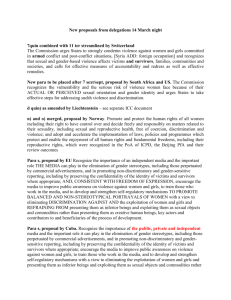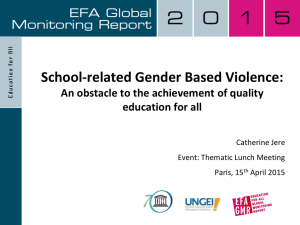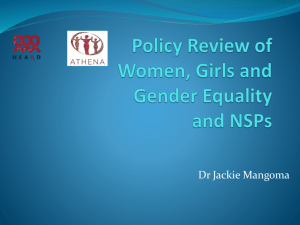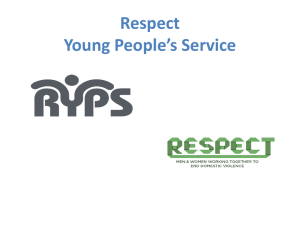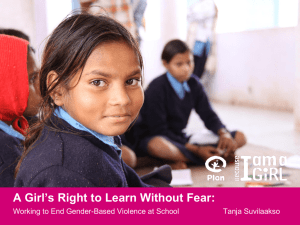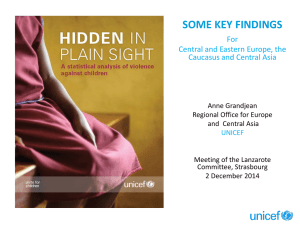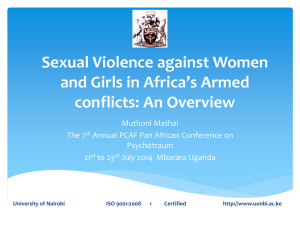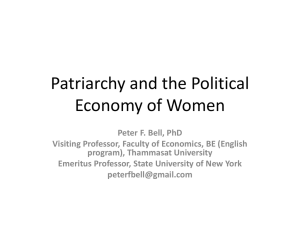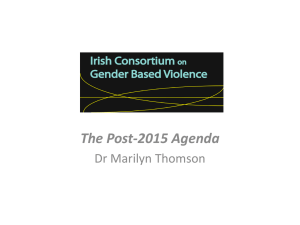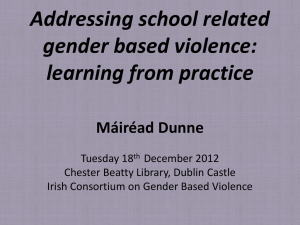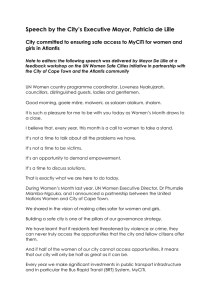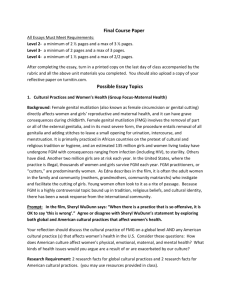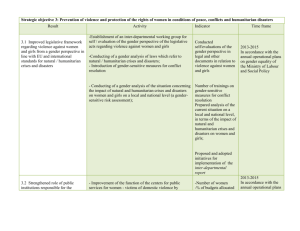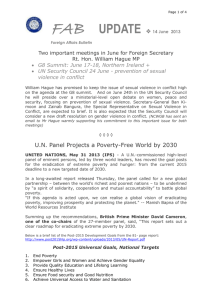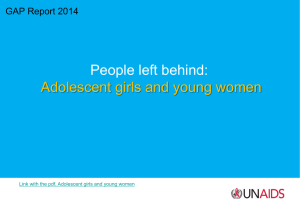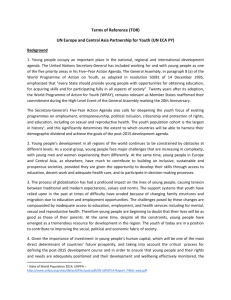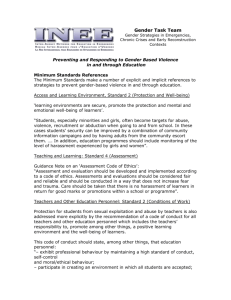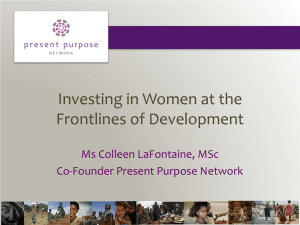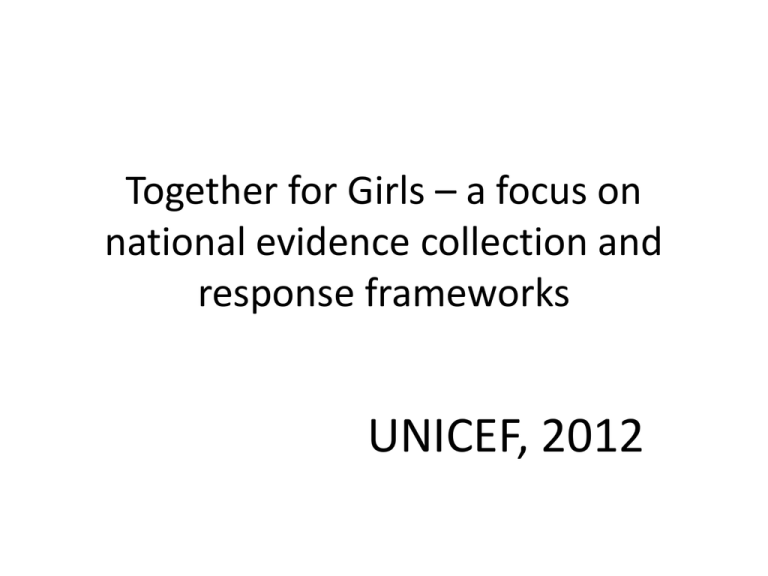
Together for Girls – a focus on
national evidence collection and
response frameworks
UNICEF, 2012
TfG - What is it?
• A global initiative of multilateral, government
and private sector partners (CDC, WHO,
UNICEF, UNAIDS, UNFPA, UN WOMEN, USAID,
Nduna Foundation…) to end sexual violence
against girls
• Activities include support to:
– National surveys and data
– Coordinated programmes
– Global advocacy and awareness
Where?
• Africa (Kenya, Malawi, Swaziland, Tanzania,
Zimbabwe)
• East Asia and the Pacific
• Latin America and the Caribbean (Haiti)
Violence against Children Surveys:
2007-2013
A snapshot from Tanzania
Sexual, Physical and Emotional Violence in Childhood
Reported by Females and Males aged 13 to 24 years
80
73.5
70
71.7
Percentage
60
50
40
30
20
27.9
23.6
27.5
13.4
10
0
Sexual Violence
Physical Violence Emotional Violence
Girls
Boys
Perpetrators of Childhood Sexual Violence
Reported by Males and Females Aged 13 to 24 years
8.6
10.3
Friend/Classmate
Girls
7.1
Relatives
Boys
14.1
Auhtority Figure
2.8
14.7
32.2
Neighbour
16.6
Stranger
25
32
24.7
Dating Partner
47.9
0
20
40
Percentage
60
What the girls are telling us
35
30
25
20
What the girls are
telling us
15
10
5
0
Prevalence
Sought help
Zimbabwe NBSLEA May 2012
Common findings
• Prevalence of sexual violence amongst
adolescent girls (25 -35%)
• Majority of survivors are victims of child abuse
(75-85%)
• Perpetrators are known (neighbours, family,
partners)
• Absent or failing service provision and access (2 12%)
• Survivors more likely to engage in risky HIV
behaviours
From Survey to Response
• VAC Surveys introduce new
oppportunities for partnerships,
funding, focus and innovation
• Response Plans usually
multivariate in nature to address
hyper-epidemic contexts
characterised by poverty, HIV and
gender inequality
• Highlights:
– Age and context sensitive
responses (e.g. focus on young
adolescents)
– Costed
– Targeted
– Linked to other national strategies,
policies and laws (gender, HIV, GBV,
social protection)
Challenges
• Politically sensitive
• Multi-sectoral and
complex
Poverty
Reduction
Strategy
HIV
Strategic
Plan
VAC
OVC Action
Plan
GBV Action
Plan
Gender
equality
strategy
• Funding
• Ethical and meaningful
involvement of survivors
And 2 questions
1. What is the cost? Cost benefit and cost
effectiveness data is still limited – TNZ/ Zim/
HQ developing model for testing
2. What works to support girls and boys in their
transition to adulthood? Pilots – national
scale programmes with robust M+E required


